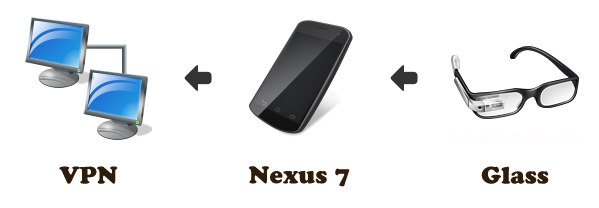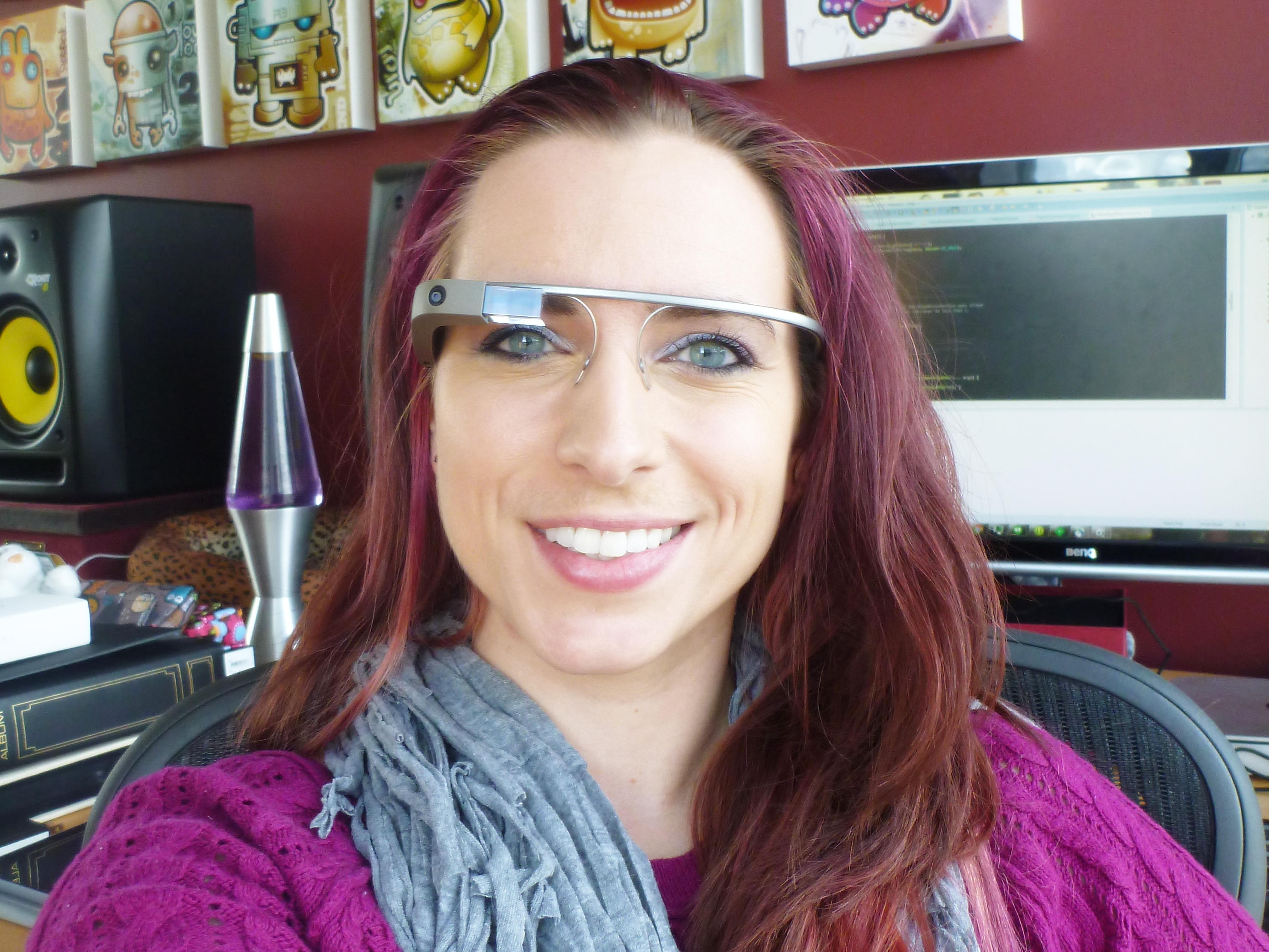"So I have a pair of google glass here if you want to play with it for the week, see what you can do".
This is how our weekly team meeting started on Monday. Needless to say I jumped at the chance, cleared my schedule and got my hot little hands on them the very next morning. I spent the next 3 days hacking together some little proof of concept applications to show at work. Glass development is easy to get into if you have previous Android development experience. It sits on top of the existing Eclipse tools and extends them via the Glass Development Kit (GDK).
There are plenty of resources out there to help get you started, so instead of duplicating those I figured I would share things that I had troubles with when I was starting out:
My Setup:

After hours (and hours) of investigation, it appears that a glass device connected to a device with a VPN connection cannot access addresses that reside on the VPN network. I connect through a VPN to gain access to machines in the office, including my development web server. I can make requests to my server through my tablet with no problem. The same request made via glass simply timed out.
The "ok glass" menu system is awesome. How cool would it be to have something similar in your app? Really awesome! But we don't get it (for free) yet. The current voice recognition functionality will return the text string as spoken and it is up to you to determine matches or close matches.
I was hoping to be able to share data between an Android device and the glass itself. Ideally I wanted to push shared stored settings and notifications from a service running on the device (in the form of live or static cards), but there appears to be no functionality in the GDK to do this. A little digging has found that an ambitious developer has written up a bluetooth host/client to do this very thing; I have not had the time to try this out yet, but thought it worthy of note.
Let me preface by stating that I haven't looked into authentication all that much, but by looking at currently supported glassware, they all use OAuth or OAuth2.
There is no way to attach a menu (Intent action) to a static card put into the timeline through the GDK. It is only possible to do so using the Mirror API. To do this currently you have to create a live card.
Nothing too crazy here. It states in the developer docs that a live card must including a PendingIntent, however if you forget to include this you will get no error, but the card will simply not appear when the application is run.
My demos proved worthy and our little mobile team is allowed to continue development with Glass.
 Couldn't resist a Glass selfie or two
Couldn't resist a Glass selfie or two
by Shayla Sawchenko
